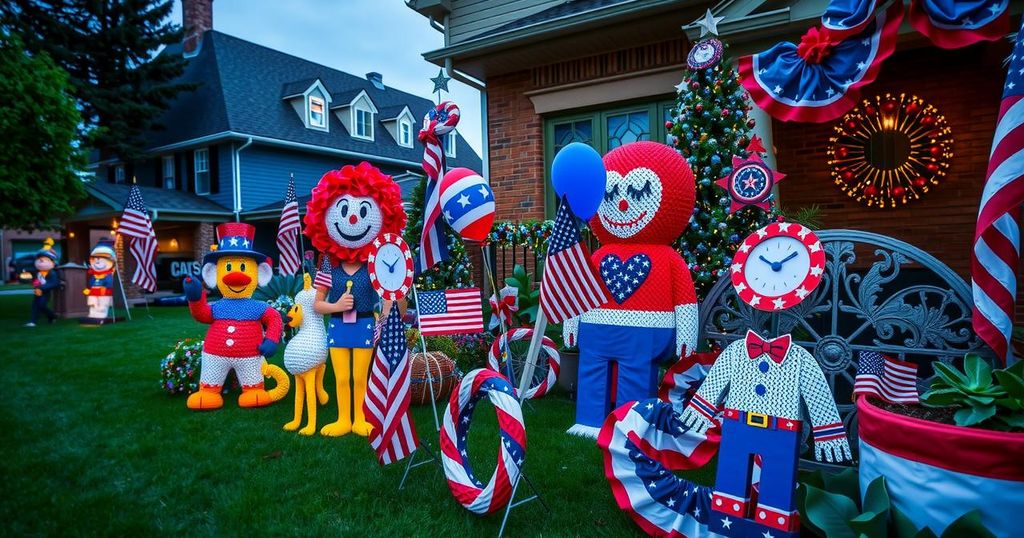The author, a newcomer in America, reflects on the distinctive elements of the election season, particularly the cultural phenomenon of yard signs. These signs serve as a means for citizens to express their political affiliation and engage with local candidates. The author shares their personal experience of participating in this tradition for the first time, highlighting the accessibility and significance of such expressions of democracy in contrast to their previous experiences abroad. Ultimately, yard signs symbolize personal journeys within the electoral process, allowing for visible civic engagement and participation in democratic ideals.
As a newcomer to America, particularly in the state of Maine, I have encountered numerous elements of the election season that have evoked both surprise and curiosity. Having participated in my second presidential election, I reflect on the stark contrasts between the electoral process here and in other regions of the world. My inaugural voting experience in 2020, amidst the contest between Donald Trump and Joe Biden, was a whirlwind filled with stress and exhilaration. Now, with another election imminent, I find myself once again navigating a blend of anxiety regarding the outcome and the unmistakable excitement of casting my vote. Among the myriad fascinating aspects of American elections, the prevalence of yard signs stands out as particularly intriguing for a newcomer such as myself. A drive through Maine reveals these signs interspersed throughout neighborhoods and rural roads, resembling a seasonal phenomenon as they emerge akin to spring blossoms as election time approaches. For me, these signs have become an accessible means of learning about local candidates contesting various positions, ranging from school board members to congressional representatives. They also provide valuable insights into the political inclinations of my neighbors, who proudly display signs supporting their chosen presidential candidates or parties. This year, I have participated in this cherished American tradition for the first time. I now have a Harris-Walz sign gracing my yard, while nearby, my neighbors exhibit their support for Trump-Vance. There is a curious joy in traversing the roads and counting the signs, akin to a delightful game. It serves as a subtle yet assertive method for individuals to articulate their political perspectives, an expression I had never encountered in my former experiences abroad. During my time in Nairobi, Kenya, I observed a different electoral landscape. The absence of yard signs was notable; instead, prominent billboards and banners featuring candidates’ faces dominated public spaces and even public transportation. These images, though polished, lacked the personal touch that American yard signs convey. In the United States, these signs feel like an extension of an individual’s identity, a visual proclamation asserting, “I support this candidate, and I wish for you to acknowledge this.” What captivates me most is the charm of informality and accessibility inherent in this practice. In the United States, every citizen has the opportunity to communicate their stance without belonging to a political elite. A humble yard sign can impart a message as powerfully as a grand campaign event. It reinforces the notion that every voice is valued, allowing individuals, regardless of their wealth, to articulate their perspectives on the future of their community and nation. To me, these signs transcend mere political advertisements; they embody the very spirit of democracy. They remind me of the rights I have diligently fought to earn. In many global contexts, elections frequently generate apprehension and tension; however, the electoral season in America, despite its inherent stress and anxiety, also offers a sense of freedom, empowerment, and pride. I have transitioned from an immigrant observer to an active participant in a system that permits me to vote and express my views through something as uncomplicated as a yard sign. While U.S. election seasons are notoriously prolonged and intense, the resultant buildup of excitement, anticipation, and occasional stress embodies a distinctive American phenomenon. This culture encourages citizen participation, open discussion, and spirited debate. I find it both intriguing and uplifting that this nation has fostered an environment conducive to such vivid civic engagement. As I prepare for my second presidential election, I carry with me the lessons gleaned from my previous experience: patience, hope, and the understanding that my vote possesses significance. The yard sign adorning my lawn may appear inconsequential, yet it symbolizes my journey from an immigrant observing from a distance to an engaged participant within the democratic process. This transformation is nothing short of remarkable.
The culture of political yard signs in the United States, particularly during election seasons, serves as a visual representation of civic engagement and personal political expression. In contrast to other countries, where massive billboards and regulated forms of campaign advertising prevail, American yard signs offer a grassroots approach to support candidates and political stances. This informal yet impactful medium enables individuals to illustrate their beliefs in their communities, reflecting broader democratic ideals and the accessibility of political participation for all citizens, regardless of social status or wealth.
In concluding, the American tradition of displaying yard signs serves not only as a unique aspect of the electoral process but also as a powerful symbol of democracy and personal expression for new citizens. This simple practice embodies the principles of civic engagement and political discourse, illustrating the evolution from a passive observer to an active participant in the democratic process. As election seasons unfold, the culture surrounding yard signs invites a deeper understanding of community dynamics and individual beliefs, ultimately enhancing the richness of the electoral experience in the United States.
Original Source: www.pressherald.com






